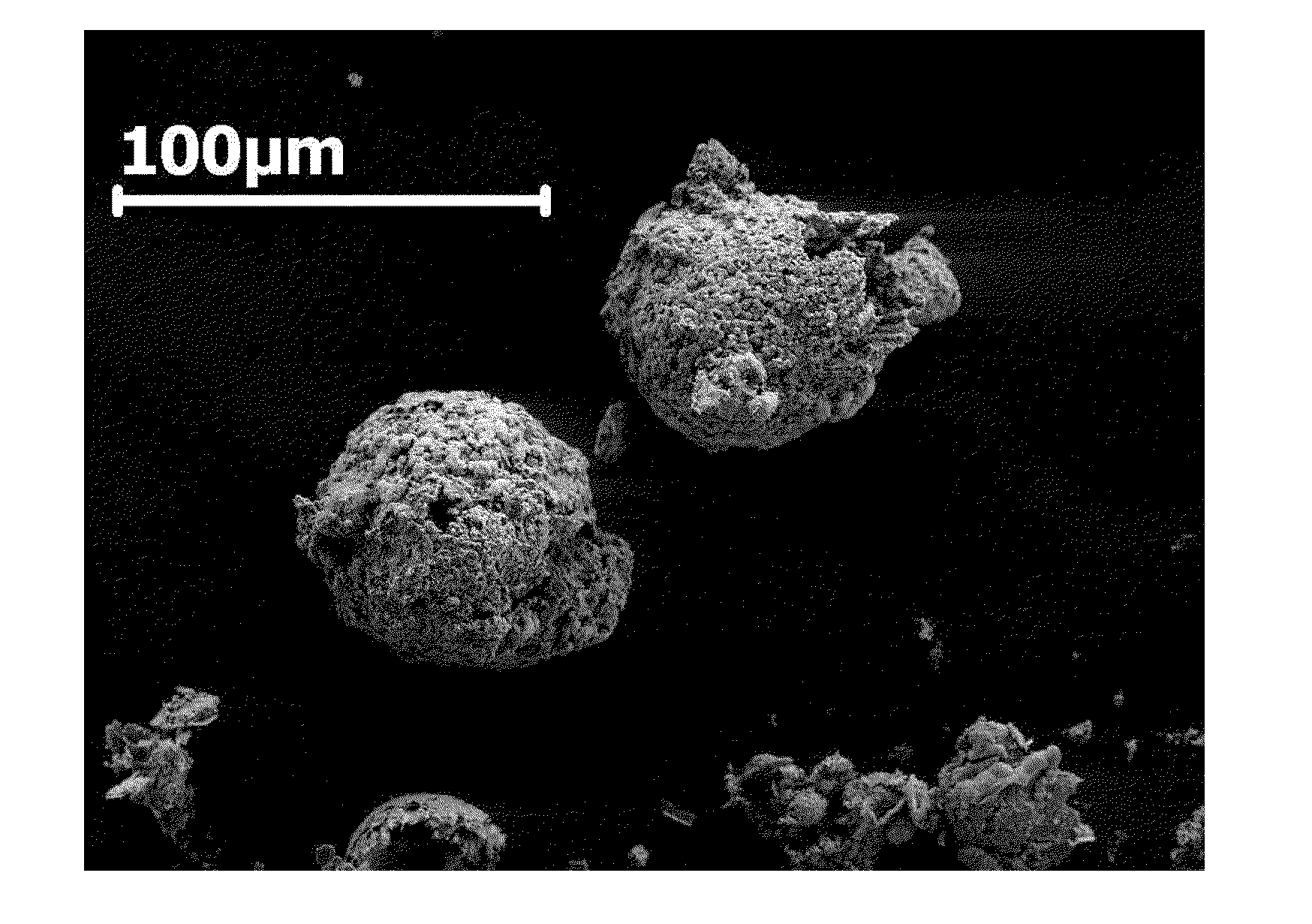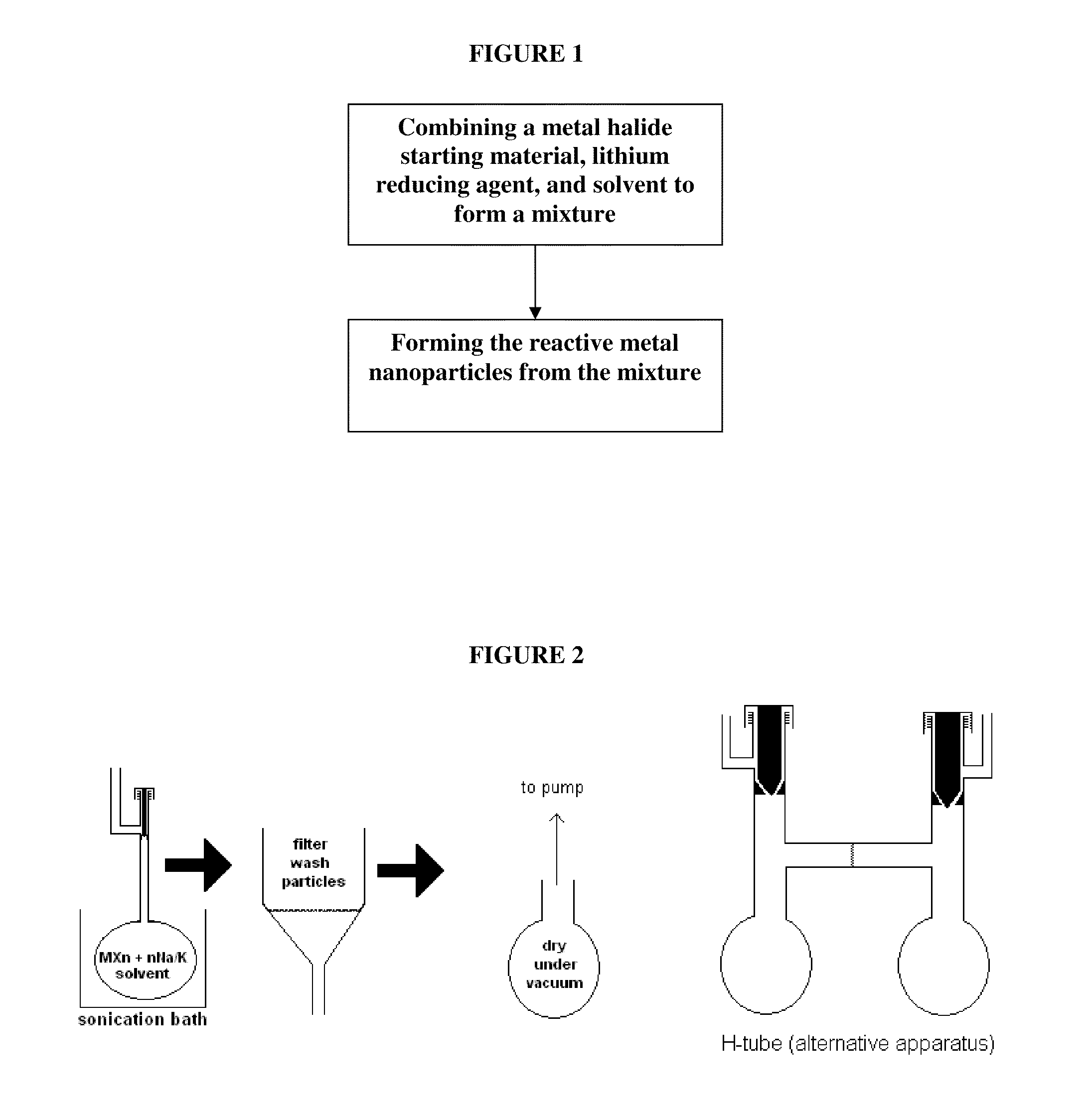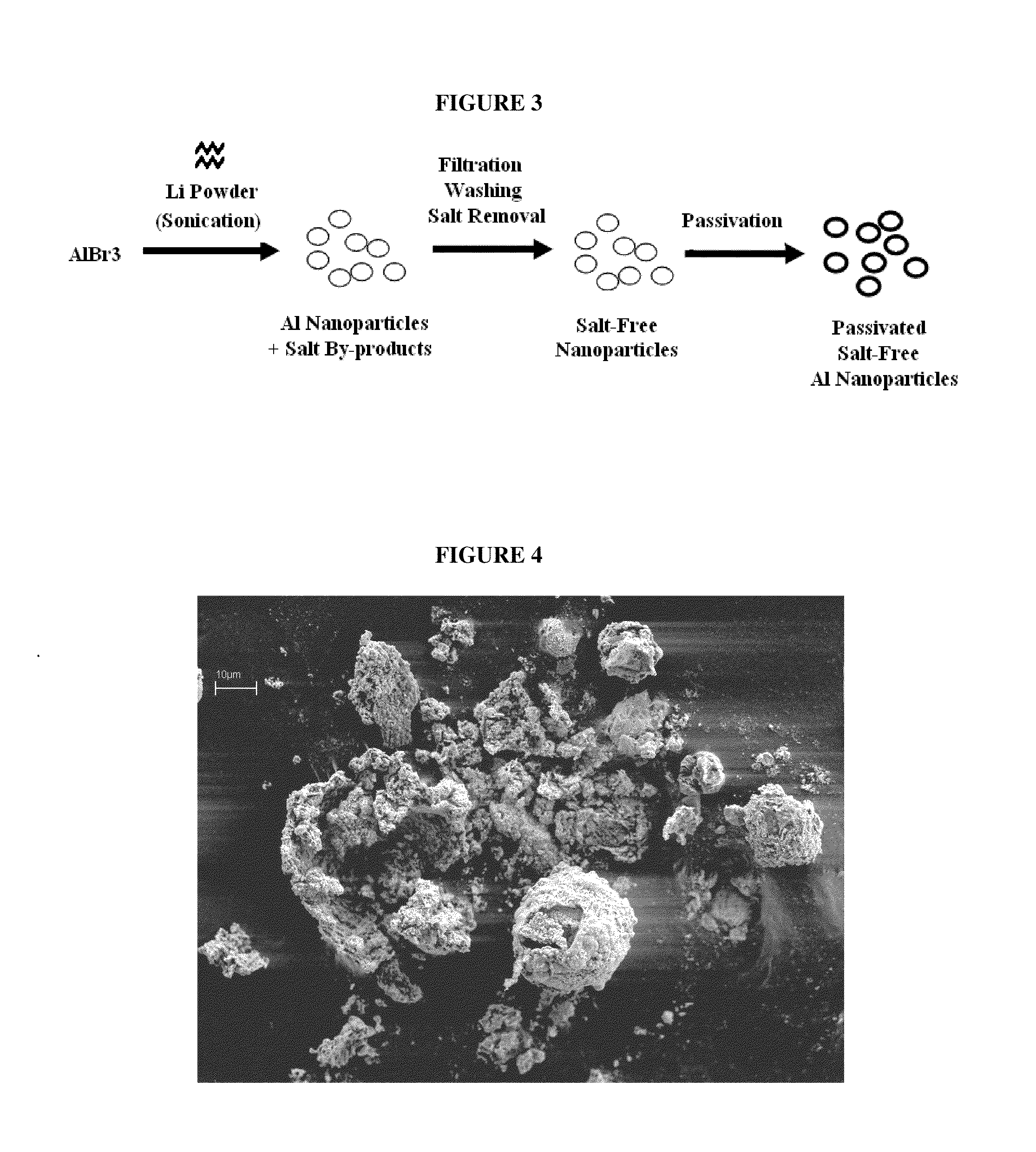Metal-Based Nanoparticles and Methods for Making Same
a technology which is applied in the field of metal-based nanoparticles and methods for making same, can solve the problems of difficult to synthesize nanoparticles of highly reactive metals, such as aluminum, and produce low purity nanoparticles, and the complexity of these conventional synthesis methods precludes large-scale industrial nanoparticle production
- Summary
- Abstract
- Description
- Claims
- Application Information
AI Technical Summary
Benefits of technology
Problems solved by technology
Method used
Image
Examples
example 1
[0054]As shown in FIG. 3, a plurality of hollow aluminum microspheres were synthesized by adding Li powder to a solution of AlBr3 in dry diethyl ether over a period of 20 minutes (Trial A, Table 1). The components were mixed together under inert atmospheric conditions inducing a vigorous and spontaneous chemical reaction, and sonicated for about 24 hours. The sonication was begun after the vigorous reaction had subsided. The resultant slurry was filtered from the mixture. Li halide byproducts were removed by washing the slurry with THF and ether. The isolated aluminum particles were configured as a plurality of porous microspheres about 5-10 μm in diameter. Each microsphere was constructed from about 50 to about 320 nm grains that were primarily composed of aluminum but also contained LiAl. SEM images of the aluminum microspheres are shown in FIGS. 4-5.
[0055]A similar reaction with toluene solvent was performed in Trial O. In this trial, the reaction was not spontaneous, and thus th...
example 2
[0056]A plurality of hollow aluminum microspheres were synthesized by adding Li powder to a solution of AlCl3 in diethyl ether over a period of 20 minutes (Trial B). The components were mixed together under inert atmospheric conditions and sonicated for about 24 hours, inducing a vigorous and spontaneous chemical reaction. The resultant slurry was filtered from the mixture. Li halide byproducts were removed by washing the slurry with THF and ether. The isolated aluminum particles were configured as a plurality of porous and hollow microspheres of about 5-10 μm in diameter. Each microsphere was constructed from about 50 to about 320 nm grains that were primarily composed of aluminum but also contained LiAl. SEM images of the aluminum microspheres are shown in FIGS. 6-7. The XRD pattern is shown in FIG. 8.
[0057]A larger scale reaction is Trial C. The Li powder was slowly added in an inert atmosphere to a solution of the AlCl3 in ˜75 mL ether over 1 hour, with periodic agitation. The r...
example 3
[0058]Aluminum particles were prepared according to the method of the present invention using the aluminum halide starting materials, lithium powder as the reducing agent and additives, as shown in Table 1, trials D-H. FIG. 8 shows an XRD powder pattern of the resultant aluminum particles in trials A, B, D-H, and O.
[0059]The synthesis of LiAl nanomaterial using 4 eq of lithium powder is shown in trial N, and its XRD powder pattern is shown in FIG. 10. FIGS. 11-12 show 27Al and 7Li NMR spectra of the Li reduction products for trial B, and FIGS. 13-14 show an NMR graph of the Li reduction products for trial F.
PUM
| Property | Measurement | Unit |
|---|---|---|
| Diameter | aaaaa | aaaaa |
| Diameter | aaaaa | aaaaa |
| Diameter | aaaaa | aaaaa |
Abstract
Description
Claims
Application Information
 Login to View More
Login to View More - R&D
- Intellectual Property
- Life Sciences
- Materials
- Tech Scout
- Unparalleled Data Quality
- Higher Quality Content
- 60% Fewer Hallucinations
Browse by: Latest US Patents, China's latest patents, Technical Efficacy Thesaurus, Application Domain, Technology Topic, Popular Technical Reports.
© 2025 PatSnap. All rights reserved.Legal|Privacy policy|Modern Slavery Act Transparency Statement|Sitemap|About US| Contact US: help@patsnap.com



